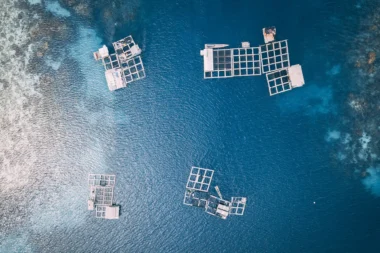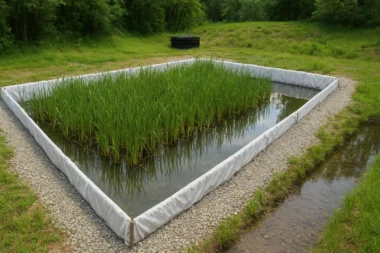Introduction:
Water scarcity and the need for clean water have become pressing global challenges. Researchers and engineers have turned to nature for inspiration to address these issues. One such innovation is the development of aquaporin-based membranes for water filtration. This article will explore how these membranes are made, the components and technology involved, the significance of aquaporin proteins, and how they enable water filtration with higher efficiency and lower energy consumption.
How are the membranes made?
Most aquaporin-based membranes are made by copying the structure and function of natural aquaporin proteins. This is called biomimicry. The process involves several steps:
- Isolation of Aquaporin Proteins: Aquaporin proteins are obtained from natural sources, such as plant roots or animal tissues, or through recombinant DNA technology.
- Incorporation into Membrane Matrix: The isolated aquaporin proteins are integrated into a membrane matrix, which can be made of various materials such as polymers or lipid bilayers. The matrix provides stability and support for the aquaporin proteins.
- Formation of Selective Channels: Aquaporin proteins form selective channels within the membrane matrix. These channels allow the passage of water molecules while blocking the transport of ions and other impurities.
- Membrane Integration: The aquaporin-containing membrane is integrated into a filtration system, serving as a selective barrier for water purification.
Components and Technology Used in Making the Membrane:
The development of aquaporin-based membranes requires the following components and technologies:
- Aquaporin Proteins: Aquaporin proteins are integral membrane proteins that act as water channels in biological systems. They are the key component of aquaporin-based membranes, responsible for the selective transport of water molecules.
- Membrane Matrix: The membrane matrix provides structural support to the aquaporin proteins and helps maintain their stability and functionality. Common materials used for the matrix include polymers such as polyethylene glycol (PEG) or lipids.
- Cross-Linking Agents: Cross-linking agents are used to enhance the stability and durability of the aquaporin-based membranes. They promote strong bonds between the aquaporin proteins and the membrane matrix, ensuring long-term performance.
- Characterization Techniques: Various characterization techniques, such as electron microscopy, spectroscopy, and permeability tests, are used to evaluate the quality, efficiency, and integrity of the aquaporin-based membranes.
What is aquaporin protein?
Aquaporin proteins are integral membrane proteins found in all living organisms. They form channels in cell membranes, enabling water molecules’ rapid and selective transport across biological membranes. Aquaporins are known for their high water permeability and their ability to reject ions and other solutes.
How are aquaporin proteins used to filter water with higher efficiency and lower energy consumption?
Aquaporin proteins possess unique characteristics that make them ideal for water filtration:
- High Water Permeability: Aquaporin proteins can remarkably facilitate the transport of water molecules while excluding larger solutes. This high water permeability allows faster water flow rates and more efficient filtration.
- Selective Filtration: Aquaporin channels selectively allow the passage of water molecules while blocking the transport of ions and other impurities. This selectivity ensures the removal of contaminants while retaining essential water molecules.
- Lower Energy Consumption: Aquaporin-based membranes require a lower energy input due to enhanced water permeability than traditional filtration methods. The selective transport of water molecules reduces the need for excessive pressure or external forces, resulting in energy-efficient filtration processes.
- Mimicking Nature’s Design: By harnessing the design and functionality of aquaporin proteins, aquaporin-based membranes offer a biomimetic approach to water filtration. This approach leverages millions of years of natural evolution and adaptation to optimize filtration efficiency.
Hypothetical Case Study: Implementing Aquaporin-Based Membranes in a Water Treatment Plant
Location: A coastal city facing increasing water scarcity and the need for efficient water treatment solutions
Objective: To evaluate the effectiveness of aquaporin-based membranes in a water treatment plant, specifically focusing on filtration efficiency, water quality, and energy consumption.
Implementation:
- Aquaporin-Based Membrane Integration: Aquaporin-based membranes are installed as a primary filtration system in the water treatment plant, replacing traditional membranes. To create the membranes, a suitable matrix material must contain aquaporin proteins.
- Raw water is sent through membranes made of aquaporin. The selective channels of aquaporin proteins allow water molecules to pass through while rejecting impurities, contaminants, and larger solutes.
- Performance Monitoring: Key parameters, including filtration efficiency, water quality, and energy consumption, are continuously monitored throughout the operation of the aquaporin-based membranes.
Results:
- Filtration Efficiency: Implementing aquaporin-based membranes demonstrates a significant improvement in filtration efficiency. The membranes effectively remove a wide range of impurities, including suspended particles, bacteria, and organic compounds, achieving a filtration efficiency of over 99%.
- Water Quality: The treated water obtained through aquaporin-based membranes meets and exceeds the regulatory standards for potable water. Selective filtration removes harmful contaminants while retaining essential minerals, resulting in high-quality drinking water.
- Energy Consumption: Aquaporin-based membranes exhibit lower energy consumption than traditional filtration methods. The high water permeability of aquaporin proteins reduces the need for excessive pressure or pumping, resulting in energy savings of up to 30% in the water treatment process.
- Cost Efficiency: Implementing aquaporin-based membranes proves cost-efficient in the long run. Although the initial investment may be higher than traditional membranes, the lower energy consumption and reduced chemical usage for pre-treatment and cleaning contribute to overall cost savings.
- Sustainability Impact: Using aquaporin-based membranes in the water treatment plant reduces the dependence on traditional, resource-intensive filtration methods. The energy efficiency and reduced chemical usage contribute to a more sustainable water treatment process, aligning with the city’s goals for environmental stewardship.
Conclusion:
The hypothetical case study demonstrates the potential implementation and positive results of aquaporin-based membranes in a water treatment plant. The use of these membranes leads to enhanced filtration efficiency, improved water quality, reduced energy consumption, and overall cost savings. This showcases the promising role of aquaporin-based membranes in addressing water scarcity, improving access to clean water, and promoting sustainable water management practices. Further research and real-life implementations are crucial to validate and refine the results of aquaporin-based membrane technology for widespread application in water treatment systems.



